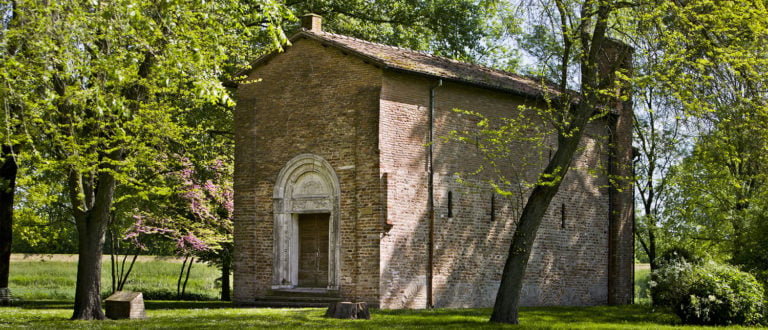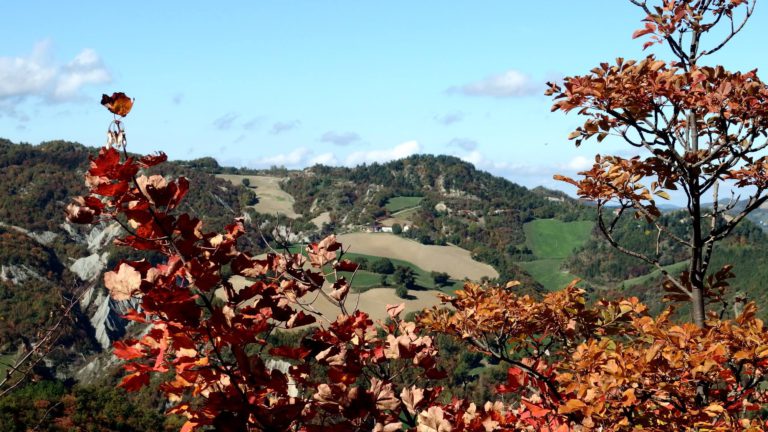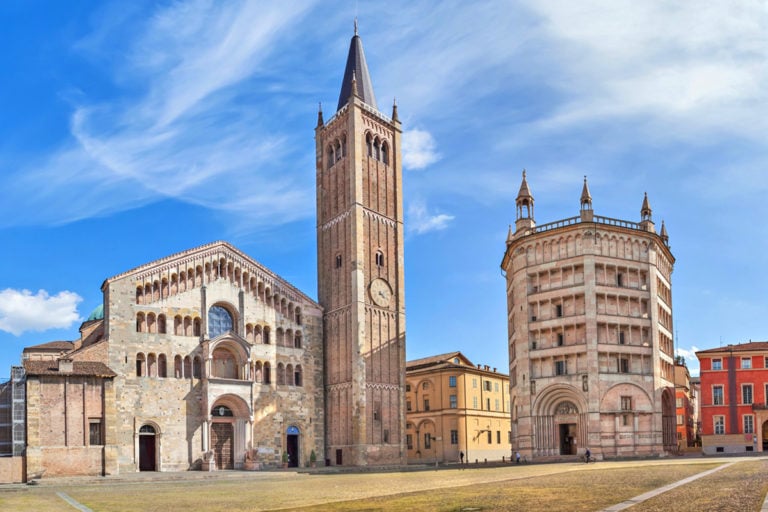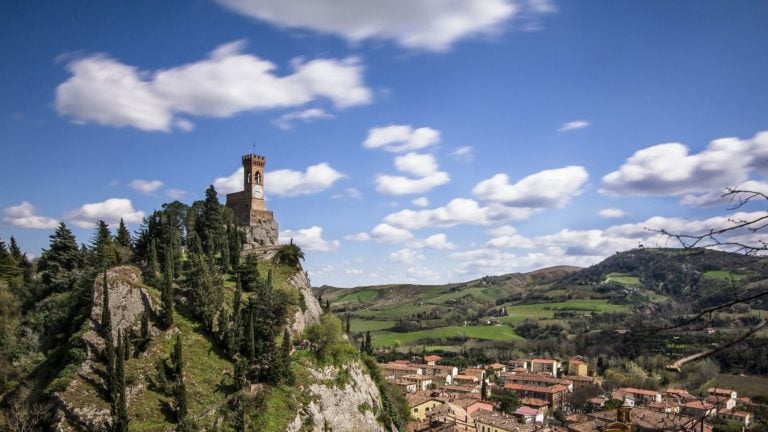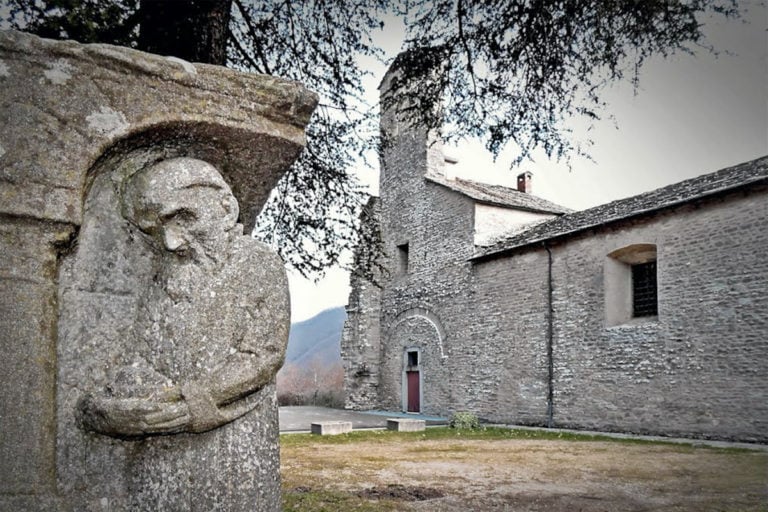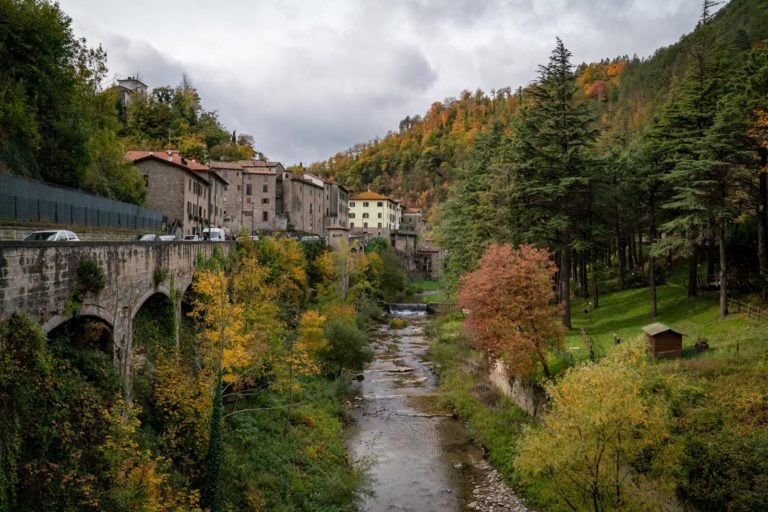On the foot of Mount San Vicinio, hidden behind the valleys of Savio and Borello, rises the Parish Church of Santa Maria Annunziata of Montesorbo rises, one of the most characteristic religious buildings in the territory of Romagna.
Located along the route of the St. Vicinius’s Way, this church plays an important role from an historical point of view, encompassing a chronological span from ancient times to the present day.
But let’s go step by step…
The parish church is just above the little town of Mercato Saraceno, on the way to Ciola, which already hosted a castle in the past.
It appears as an isolated building made of stones and bricks set on a hillock and reachable thanks to a street taking you directly in front of its façade.
The concern for the building, started at the beginning of the 20th century with Giuseppe Gerola’s studies and gone on over time, has recently brought the church to a complete renovation.
This brought back a very important architectural and historical-artistic heritage – whose origins probably date back to the 6th century – to the whole local community.
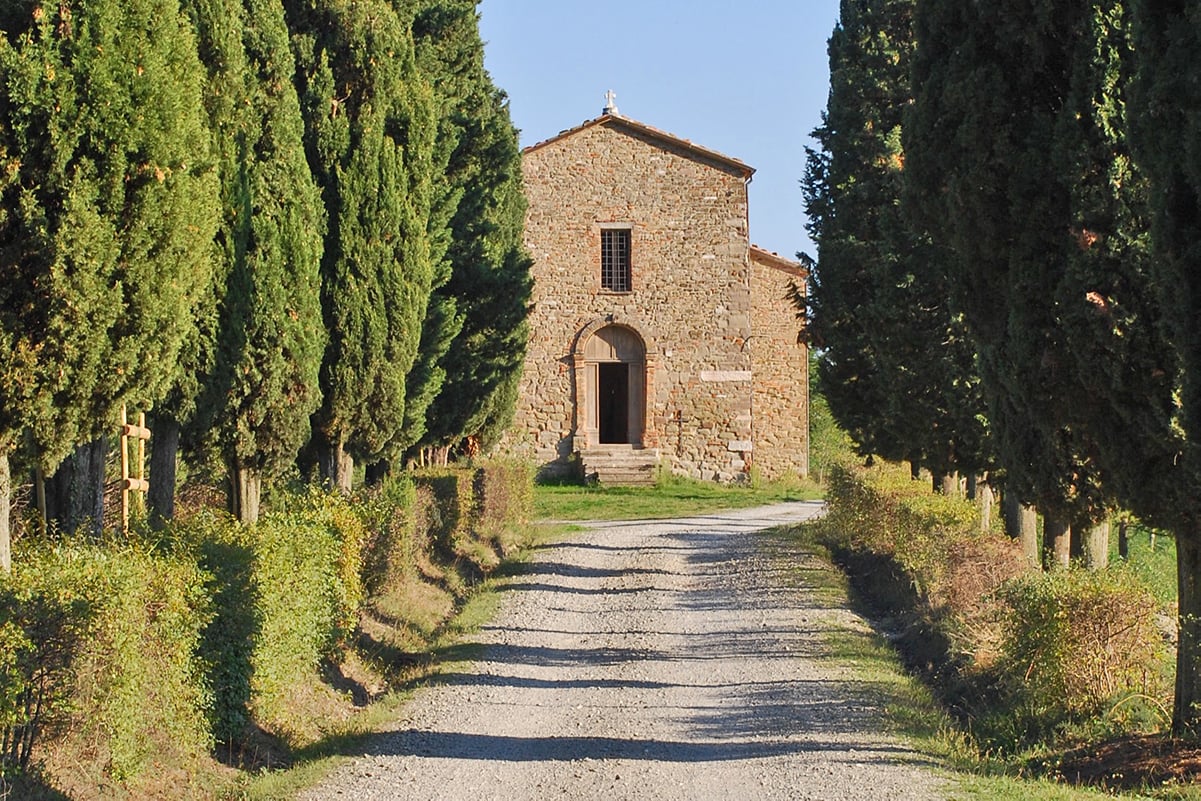
To the origins
The history of this church is quite full of events and, to some extent, still not completely clear.
The stones making up the structure and the inner furnishing of the building open a window on the church’s long years of evolution, even more than what the written documentation says.
As the parish church of San Pietro in Sylvis in Bagnacavallo – another stunning example of religious building in the countryside – the church of Montesorbo is a palimpsest-monument that shows what the different historical epochs have left.
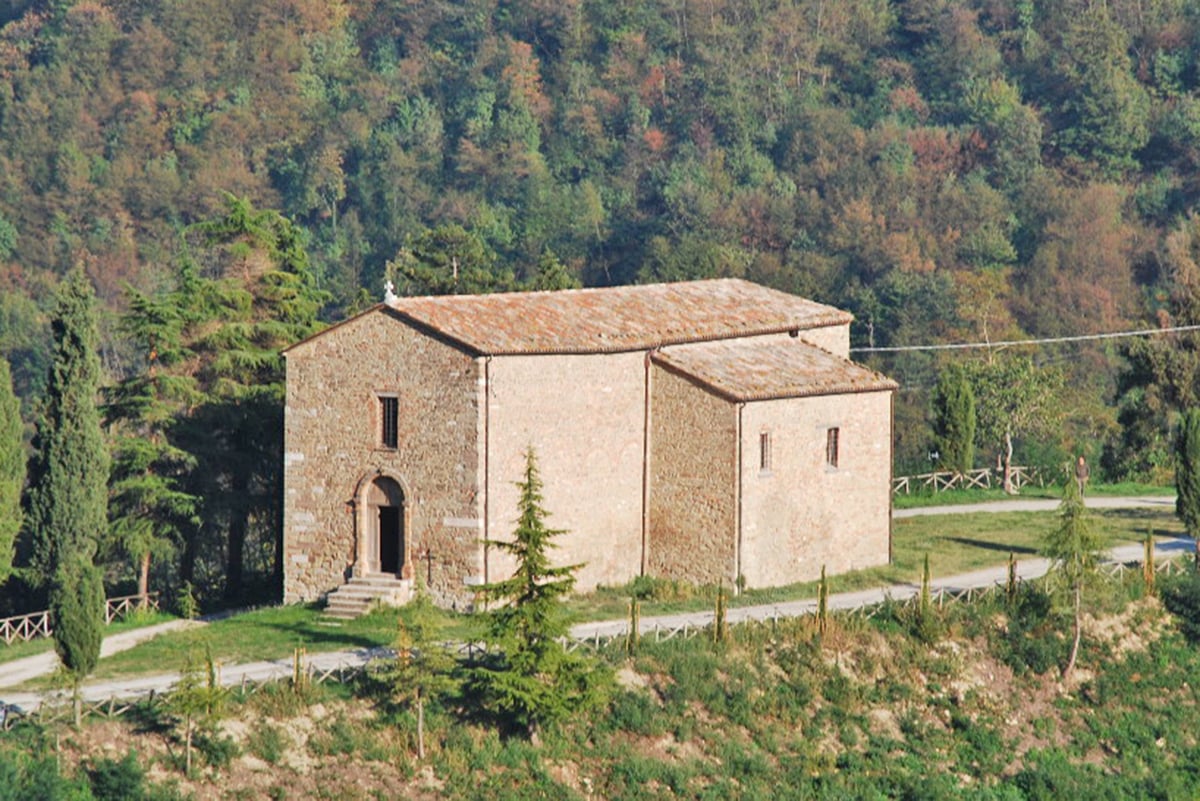
The architectural structure
First of all, its structure. Today’s Latin cross plan, which is common to many other religious buildings, immediately outlines an irregularity.
Studies show that the cross plan was not built according to a well-organized project, but it is rather the result of a succession of different plans, which were modified and renovated over time.
At first, the church was smaller and had just one room; then, it became a church with three naves and a body. Finally, it gained the current structure, with a central body and a transverse transept.
Just looking at the building from the exterior, you get the church’s chronological complexity.
On the walls, one can notice several redeployed ancient and medieval architectural elements, to say nothing of the circular apsis, where a series of earthenware sculptures unmistakably refer to the Romanesque age, between the 11th and 12th century AD.
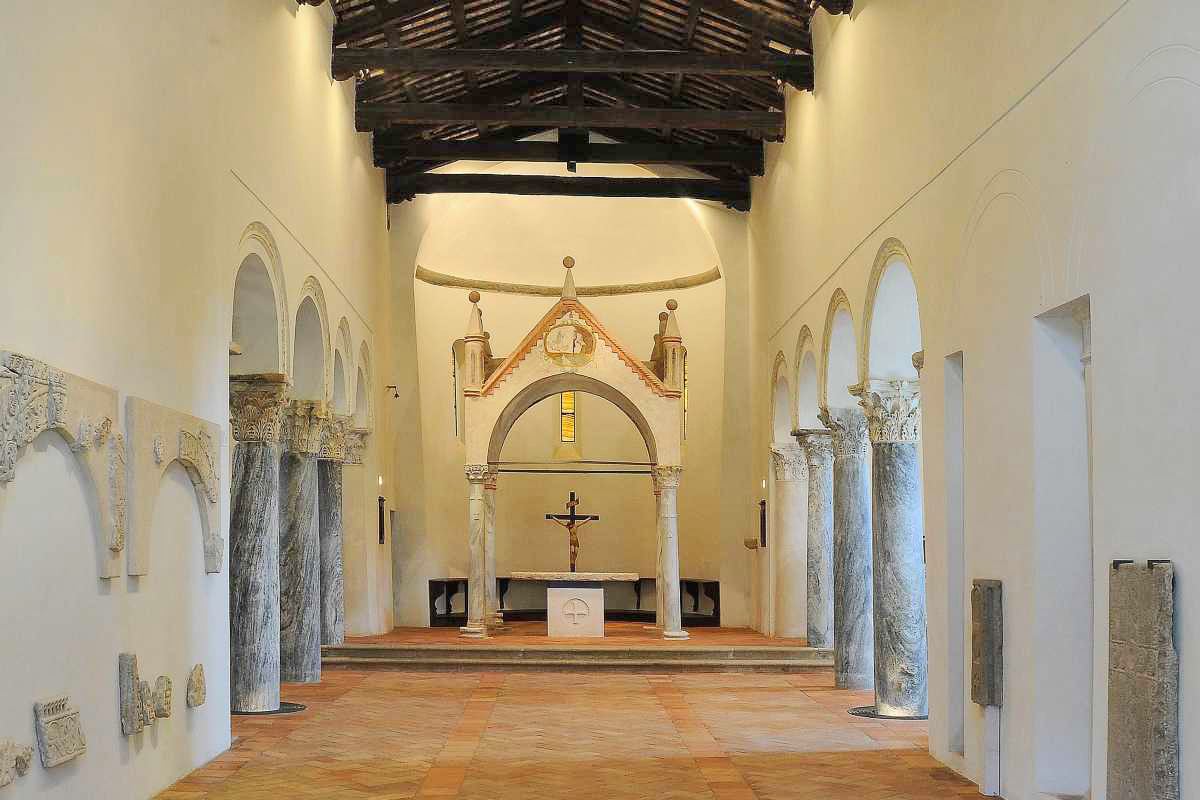
The interior decoration
As soon as you enter, thanks to a skilful renovation work carried out in the 2000s, the splendid 15th-century ciborium in the area of the presbytery captures all the attention.
The studies and restoration works have dated it back to the half of the 15th century, thanks to a peculiar inscription discovered in one of the intradoses.
What is even more important is that these works – partly realised with re-used objects – have made the ciborium fully readable and much more valuable, also thanks to the partial recovery of the Renaissance and modern painted decorations.
On the sides, other elements tell about a more ancient past. The columns and capitals of the church all date back to the Roman and Late Antique period, and probably came from buildings of the nearby town of Sarsina. The refinement of the precious marbles coming from different areas of the Mediterranean, recalls buildings of great prestige.
Next to the central nave, it is possible to admire reassembled fragments of the arches of a decorated early-medieval ciborium dating back to the 8th -9th century AD, while in the chapels of the transept is a small lapidarium with many architectural elements dating from the Late Antiquity to medieval and modern times.
It is possible to see fragments of capitals, plutei, architraves and slabs with animal and vegetal decorations, as well as depictions recalling religious meanings.
Among the slabs, worth a mention are the one decorated with a gemmed cross and an epigraph, and the slab of bishop Florentius.
A perfect synthesis from a historical and material point of view for a parish church, which – in our opinion – is one of Emilia-Romagna’s most suggestive ones, located in a natural area of absolute value.
If you are passionate about religious tourism, we invite you to visit two important websites:
→ www.camminiemiliaromagna.it
Emilia-Romagna’s 21 paths: all the spiritual walks and pilgrimage routes
→ www.monasteriemiliaromagna.it
Abbeys, cathedrals, monasteries: the treasures of Emilia-Romagna’s 15 dioceses
Author
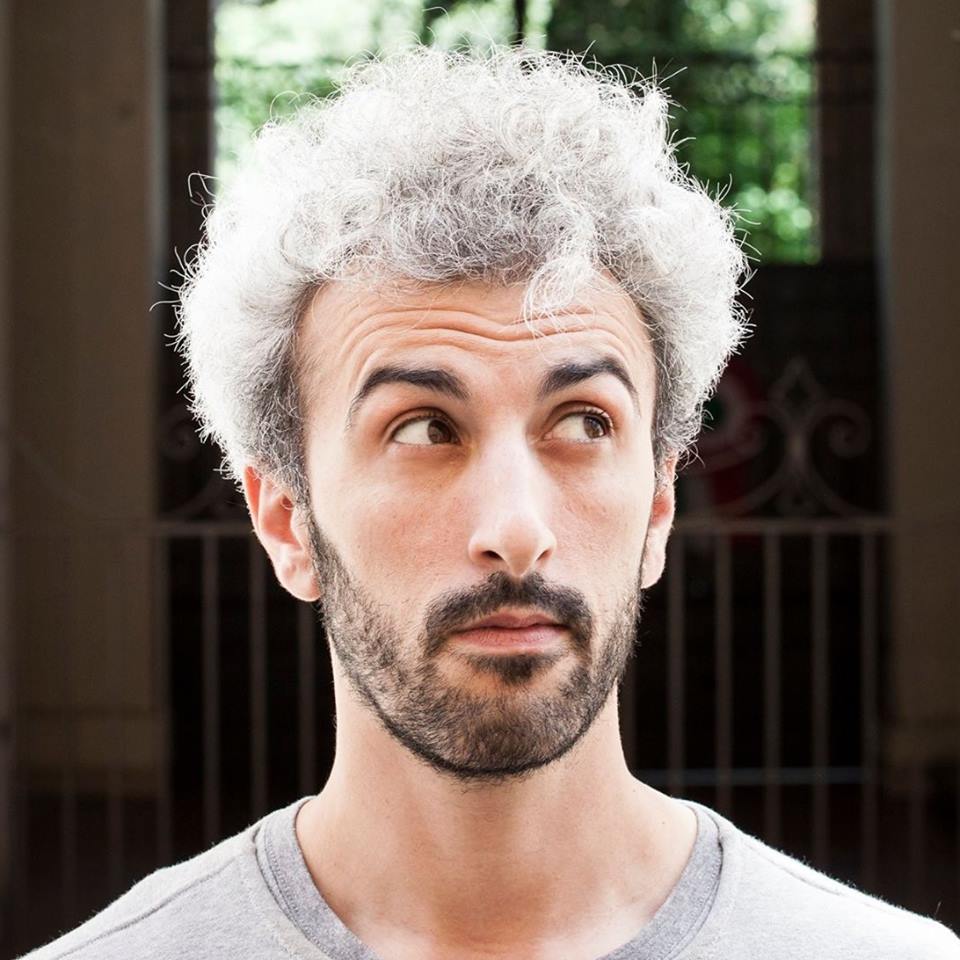
Davide Marino
Davide Marino was born archaeologist but ended up doing other things. Rational – but not methodic, slow – but passionate. A young enthusiast with grey hair
You may also like
The most beautiful Parish Churches in Emilia-Romagna
by Davide Marino /// February 28, 2019
Emilia Romagna Slow | Saint Vicinio Way
by Walter Manni /// May 15, 2017
The Most Beautiful Churches and Cathedrals in Emilia-Romagna
by Davide Marino /// September 20, 2018

Interested in our newsletter?
Every first of the month, an email (in Italian) with selected contents and upcoming events.
Dante’s Routes, in Romagna and Tuscany
by Celestina Paglia /// January 18, 2021

